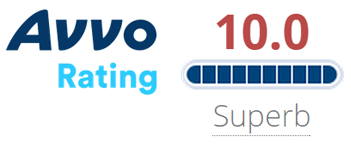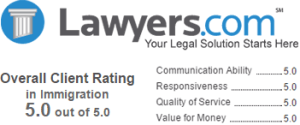Memorandum to Class Members
Please distribute this memorandum to late-amnesty applicants, advocates and lawyers
From: Peter Schey, Center for Human Rights and Constitutional Law
CATHOLIC SOCIAL SERVICES V. ASHCROFT:
On February 15, 2002, U.S. District Judge Lawrence Karlton issued a 19-page Order granting plaintiffs’ motion to amend the complaint, add parties, and modify the class definition in the CSS case. This is great news for all CSS class members. Under the new Order final relief in the CSS case may become available even to class members who never applied for temporary work permits under the CSS case. It also makes it more likely that we will shortly win a final order which will give most class members two separate ways to approach legalization: (1) amnesty under the original 1986 law and (2) legalization under the LIFE Act.
We believe class members should have these two separate avenues for several reasons (the same applies to LULAC class members):
(1) INS provided no notice to class members of relief available under the LIFE Act and therefore most class members have not applied under the LIFE Act. However, we hope to win broad and wide notice of final relief under the CSS case so many more class members will know about and have the chance to apply for 1986 amnesty under the CSS case.
(2) People who never applied for temporary work permits under the CSS case are ineligible to apply for legalization under the LIFE Act but will be eligible to apply for amnesty under the CSS case if and when we win a final decision.
(3) There are some differences between the 1986 amnesty law and the LIFE Act which may make some class members ineligible for adjustment under the LIFE Act but eligible for amnesty under the 1986 law.
(4) Under the LIFE Act winning court review of illegal INS decisions will be very difficult. However, if the INS does not implement a final relief order in CSS in good faith, we will probably be able to have Judge Karlton review the INS’ conduct.
Final briefs will be filed in the CSS case within the next month and we hope to receive a decision from the Court sometime in April or May 2002 ordering a final remedy for all CSS class members. INS may appeal that decision, but we are hoping the Courts will not block the decision from going into effect while INS follows it’s appeal.
LULAC/Newman v. INS:
The LULAC/Newman case is also continuing, although “front-desked” class members have already had the opporunity to file applications. The case is pending before the Ninth Circuit Court of Appeals which has ordered a hearing in early April 2002. If you would like to attend the hearing, please call Silvia at 213/388-8693 ext. 107 and she will provide you with the date, time and location (I believe in Pasadena or San Francisco).
We hope to win a final decision for group 2 class members (those who visited an INS or QDE office during the 1987-88 application period without a complete application and fee in hand (Group 2), and were turned away because they had traveled abroad between 1992 and 1997). We hope the final decision will benefit all Group 2 class members, whether or not they applied for or were granted work permits.
LIFE Act:
People who have previously filed for work permits in the CSS, LULAC and Zambrano cases (even if they were not granted work permits) may also apply for legalization under the LIFE Act. The deadline is May 31, 2002. We have been told the INS may extend the deadline. If we hear that the INS has extended the deadline, we will do whatever we can to spread word on this decision. Those who have access to the internet should check our web page weekly – http://www.centerforhumanrights.org) The INS has still not issued FINAL regulations implementing the LIFE Act.
If people already have work permits under CSS they have the option to renew these work permits. If they have problems renewing their work permits, they should contact me by email (pschey@centerforhumanrights.org) or telephone (213) 388-8693 ext. 104, or fax (213) 386-9484.
We will try to get a court order also allowing Newman/LULAC Group 2 class members to renew their work permits.
If class members in CSS or LULAC applied for but were denied work permits, we recommend they apply under the LIFE Act and also apply for work permits as part of their LIFE Act applications.
If class members in CSS or LULAC have work permits, we recommend they begin preparing the documents needed for amnesty under CSS or LULAC, or LIFE Act applications (i.e. showing residence from before 1982 to May 4, 1988). These class members have the right to wait to file their LIFE Act applications for another couple of months to see if the INS issues final regulations which change the standards of the program or extends the application period. We recommend these class members prepare their evidence of residence from 1982 to 1988 but wait another couple of months to file their LIFE Act applications (at least until INS issued final LIFE Act regulations).
People may apply for the LIFE Act whether they’re living in the U.S. or abroad. Either way they must prove they lived in the US from before 1982 to May 1988. Information about applying in the U.S. or abroad is available at the INS web site. We are not sure if blank applications can be obtained at INS offices in the U.S. and U.S. consulates abroad. They should be.
As stated above, it is our position that class members should be allowed to apply for BOTH amnesty under CSS/LULAC AND for adjustment under the LIFE Act.
CLASS MEMBERS SENT NOTICES OF INTENT TO DENY UNDER LIFE ACT:
People who have applied for the LIFE Act and have received notices of denial or intention to deny, should telephone me at 213/388-8693 ext. 104 or send e-mail to pschey@centerforhumanrights.org.
They should also fax me copies of their LIFE Act application (I-485), the proof they filed that they had applied for a work permit under CSS or LULAC or Zambrano, and the letter of denial or intent to deny sent to them by the INS. Fax these documents to my attention at (213) 386-9484. Write your name, telephone number, email address (if you have one), and home address on the front of your fax.
PEOPLE WHO NEVER APPLIED FOR WORK PERMITS IN CSS OR LULAC:
People who believe they are class members (that is, lived in the U.S. unlawfully from before 1982 to May 1988 and briefly traveled abroad and were therefore blocked or discouraged from filing for amnesty during the 1987-88 application period) but do NOT qualify for the LIFE Act because they never applied for work permits under CSS or LULAC, should also contact me by phone, fax or email for further information (see humbers and e-mail address above).
CLASS MEMBERS WHO FILED LEGALIZATION QUESTIONNAIRE FORMS:
Class members who filed Legalization Questionnaire forms to INS in Washington DC or Vermont and (1) were denied, or (2) never heard back from the INS, may fax me copies of the documents they sent to the INS and copies of their denials (if they were sent a denial). Write your name, telephone number, email address, and home address on the front of your fax.
CLASS MEMBERS WHOSE LEGALIZATION QUESTIONNAIRES WERE APPROVED:
Class members whose Legalization Questionnaire forms were approved and who sent legalization applications to INS in Texas and have heard nothing may send me copies of the approval from INS Washington DC or Vermont, and a copy of their legalization application (I-687) and fee receipt. Write your name, telephone number, email address, and home address on the front of your fax.
START ORGANIZING PROOF OF 1982-88 RESIDENCE:
Class members should start organizing proof of 1982-88 residence now. This proof is needed for applications for amnesty under CSS and LULAC, and for LIFE Act applications. If class members have already sent in their LIFE Act applications without this proof, they should gather this proof and send it to INS with a cover letter saying you are supplementing your LIFE Act application.
Proof of continuous residence from 1982 to 1988 may include:
Receipts, bus tickets, dental records, medical records, educational records, drivers license, letters addressed to the class members, stamped envelopes addressed to the class member, school records, telephone bills, rent receipts, leases, or any other piece of paper which has a date between January 1982 and May 1988 that was obtained by the class member. The document does not have to have the class member’s name on it to be helpful to their application.
Every class member should get declarations from people in the United States and in the applicant’s home country affirming that the applicant was living in the United States from before January 1982 until at least May 1988. These declarations do not have to be notorized, but it may help a little to have them notorized.
The person filing out the declaration should provide the kind of information on the sample declaration below or attached. Do not just copy this declaration and have people fill in the blanks. It would be much better to rewrite the declaration using the sample below just as a model.
Declarations should give as much detail as possible. For example, if a person is saying they have known the class member since 1984, explain how they first met the class member in 1984, where did they first meet the class member, etc. Also, provide as much detail as possible about how the person signing the declaration knows that the class member was present in the United States during certain years.
If people have little hard evidence (like rent receipts, educational records, medical records, etc.) showing that they lived here from before 1982 to May 1988, and file LIFE Act applications with only a couple of vague declarations from third parties, we think their LIFE Act applications will be denied.
Such class members (who have already filed LIFE Act applications with little hard evidence) should immediately start gathering the type of declarations described below, and supplement their applications with these additional declarations (send them to the INS with a cover letter stating your A number and asking that the declarations be added to your file). We recommend that class members not file LIFE Act applications until they have obtained the declarations they need to support the application. It is much easier to file an application than to get it approved.
Class members should keep copies of everything they send to the INS. This is very important.
The word “you” in the sample declaration below refers to the person filing out the declaration. The word “applicant” refers to the class member seeking to legalize his or her status (the person the declaration is being done for).
(SAMPLE) DECLARATION OF ______________
I, _____________, depose and say:
1. I am a lawful permanent resident of the United States [or: I am a citizen of the United States, or if living outside the US state: I am a citizen and national of ____________].
2. I reside at ________________ (address).
3. I am employed by _______________ (name of employer), located at ______________ (address of employer).
4. I have known _________________ (full name of applicant) since approximately 19__. We first met in ________________ (name of place where you first met). We met through _______________ (explain who you met through). We met _____________ (explain circumstances how you met)
5. If the person signing the declaration knew the applicant when the applicant first
came to the U.S., explain details: In __________, 19 __ (date when applicant first came to the United States) I was residing at _______________. At that time I was employed by ____________, located at/in ________________. I am aware that in ___________, 19 __, _____________ (name of applicant) came to the United States and began living here because _____________
________________________________________________ (explain in detail how you know that the
applicant came to the United States and started living here). I believe ______________
(name of applicant) came to the U.S. with (name any people the applicant came to the U.S. with). I believe the applicant left __________ and traveled to __________. From there, ____________ (name of applicant) has informed me that he (or she) entered the United States _________________ (explain how the applicant entered the U.S. if you know. For example, Mrs. Jones has informed me that she first flew by air from Singapore to Toronto, and then was driven by a friend from Toronto to New York city shere she started living).
6. (If you know this:) When _____________ (name of applicant) first came to the United States s/he resided on _______________ (name of street), in the City of ______________, _____________ (name of state). I know that ______________ (name of applicant) lived at that address from about _____________ to approximately _________, 19__, because ____________________________________________________________________________________________________________ (explain in detail how you know applicant lived at that address; explain whether you visited together, if wo when and where and how often, explain whether you talked to the applicant on the phone, and if so about how often. If you were living aborad at the time, explain whether you and the applicant sent each other letters ands/or spoke by telephone, and about how often). During this time I believe ______________ (name of applicant) worked as a ______________ (describe type of work) for __________ (name of employer, if known). (Explain how you know the applicant worked here — did you work with the applicant, if so what years did you work there, in what position, etc. If not, did the applicant tell you he or she worked there? If so, explain you know this from information provided to you by the applicant (for example: During this time Mrs. Jones informed me that she was working as a housekeeper for the Hilton Hotel).
7. In about _________, 19__, ____________ (name of applicant) moved to __________________. I believe he (or she) lived there from about ___________(provide month and year), until approximately ____________ (provide month and year). During this time I know that ____________ (applicant) was living at this address because _________________ (explain in detail how you know applicant lived at that address; explain whether you visited together, if so when and where and how often, explain whether you talked to the applicant on the phone, and if so about how often. If you were living aborad at the time, explain whether you and the applicant sent each other letters ands/or spoke by telephone, and about how often). During this time I believe ______________ (name of applicant) worked as a ______________ (describe type of work) for __________ (name of employer, if known). (Explain how you know the applicant weorked here — did you work with the applicant, if so what years did you work there, in what position, etc. If not, did the applicant tell you he or she worked there? If so, explain you know this from information provided to you by the applicant (for example: During this time Mrs. Jones informed me that she was working as a housekeeper for the Hilton Hotel).
8. In about _________, 19__, ____________ (name of applicant) moved to __________________. I believe he lived there for about ___________, until approximately ____________ (date). During this time I know that ____________ (applicant) was living at this address because _________________ (explain if you visited or spoke with the applicant by phone, or corresponded by mail, etc.). During this time I believe ______________ (name of applicant) worked as a ______________ (describe type of work) for __________ (name of employer, if known). (Explain how you know the applicant weorked here — did you work with the applicant, if so what years did you work there, in what position, etc. If not, did the applicant tell you he or she worked there? If so, explain you know this from information provided to you by the applicant (for example: During this time Mrs. Jones informed me that she was working as a housekeeper for the Hilton Hotel).
9. Describe other addresses where you know the applicant lived from 1982 to May 1988 — you don’t have to describe every address where the applicant lived — you should describe every address that you know about in separate paragraphs.
10. Desribe any other important events that show the applicant lived in the U.S. between
1982 and May 1988. Here are some examples. Only provide information you know about. In about May 1984 _________ (the applicant) was married to _________ in San Jose, California. From about ________ (month and year) to about _____ (month and year), _________ (name of applicant) was enrolled in __________ (name of school) taking classes in ___________ (type of classes). In about __________ (month and year, ___________ (name of applicant) gave birth to a baby boy (or girl) named ____________ in the City of ____________. In __________ (month and year) ________________ (name of applicant) took a vacation with me and __________ (name other people) in ___________ (name of place). Describe any other special events you were part of or that the applicant told you about involving the applicant between January 1982 and May 1988.
11. If you are aware of this either from some firts hand knowledge or because the applicant told you about it, describe the following. For Newman/LULAC applicants: ___________ (name of applicant) briefly departed the United States in about _________ (month/year) in order to visit _____________ in _____________ (name of country). Or describe the purpose of the visit. __________ (name of applicant) returned in about _______ (month and year). I know about this departure because ______________(describe how you know about this absence from the United States. For example, myabe applicant visited you in theikr home country, maybe you drove the applicant to an airport or bus station, maybe the applicant told you about the absence, maybe the applicant telephoned you while away). For CSS applicants: ___________ (name of applicant) briefly departed the United States in about _________ (month/year) in order to visit _____________ in _____________ (name of country). (Or describe the purpose of the visit). __________ (name of applicant) returned in about _______ (month and year). I know about this departure because ______________ (describe how you know about this absence from the United States.) (for example, maybe applicant visited you in theikr home country, maybe you drove the applicant to an airport or bus station, maybe the applicant told you about the absence, maybe the applicant telephoned you while away).
12. If you know anything about how the applicant was turned away when they tried to file for amnesty during the application period from May 1987 to May 1988 describe what you know. You may know information because then applicant told you about it, they may have shown you the application they tried to file, you may have helped them file out an application, etc. Most applicants have already explained to the INS how they were turned away when they tried to apply for amnesty during the 1987-88 application period.
13. I know that ___________ (applicant) is a person of good moral. I believe she (or he) will be an asset to the community and to the United States. State following only if true: To the best of my knowledge ___________ (name of applicant) has been convicted of any crimes in the United States or anywhere else.
10. Please do not hesitate to contact me if additional information is needed.
I declare under penalty of perjury that the foregoing facts are true and correct. Executed this ___ day of ______, 19__, in the City of _____, State of __________.
sign_______________________
Type name
notarize if possible
(not required, but recommended)








